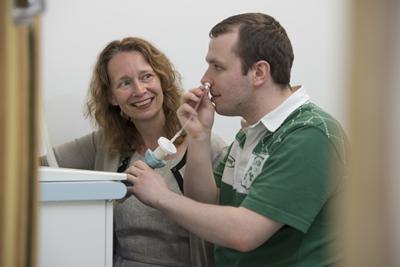Southampton researchers create 'nose in a dish' to help develop new drugs

Researchers in Southampton have created a model which mimics the lining of the nose to help them develop and test new drugs.
The innovation, which comes complete with mucus and hair-like protrusions known as cilia that sweep mucus away, provides a close replica of activity within the nasal cavity and offers an alternative to animal testing.
This enables lab researchers to carry out quick and safe initial analysis of nasal sprays and other treatments for respiratory infections, which often start in the nose and travel down into the lungs.
“Nasal inhalers can be an effective way of getting drugs into the body but, to work well, the drugs must pass through the cells lining the nasal cavity without damaging them and that requires tightly-controlled doses and careful testing,” explained Professor Jane Lucas, part of the study team based the NIHR Southampton Respiratory Biomedical Research Unit.
“By growing artificial nasal cavity cells in a dish in the laboratory, we are able to conduct initial tests very early on which, in turn, helps to speed up the research phase and the development of new drugs.”
Professor Lucas, a consultant in paediatric respiratory medicine at Southampton Children’s Hospital, said the model is also being used to aid understanding of specific conditions such as primary ciliary dyskenesia (PCD), a rare disease which prevents cilia in the nose and lung clearing mucus.
She added: “In addition to the testing environment for new drugs, the lab model also offers the potential to enable us to look at aspects of particular conditions and investigate how or why certain issues occur and how we can tackle them.”
The development, which involved collaboration with the University of Southampton’s faculty of health sciences and the Woolcock Institute of Medical Research and Sydney Medical School in Australia, was published in the journal Molecular Pharmaceutics.